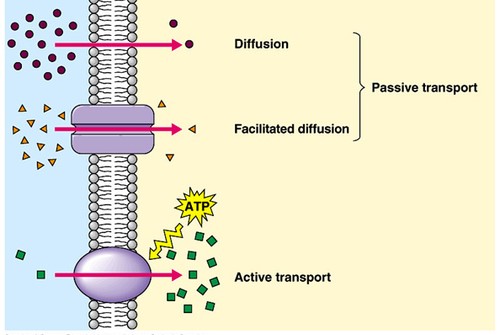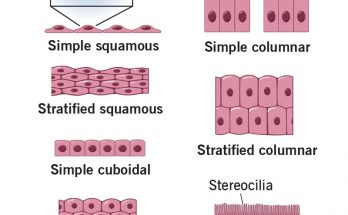The transport of substance is the most important function.
Transport across the Cell Membrane may take place with expenditure of energy (Active transport) and without the expenditure of energy (passive transport).
Transport across Cell Membrane
Plasma Membrane performs certain physical activities such as diffusion and osmosis for the intake of some substance.
The Transportation across Cell Membrane takes place by two ways
- Transport Across the Membrane by Diffusion
- Transport Across the Membrane by Osmosis
1. Transport Across the Membrane by Diffusion
- The spontaneous movement of a substance (solid, liquid or gas) from a region of its higher concentration to a region of its lower concentration is called diffusion.
- For example, CO₂ (cellular waste, which needs to be excreted out) accumulates in higher concentration inside the cell.
- In the cell’s external environment, the concentration of CO₂ is lowered compared to inside of the cell.
- Due to this difference in the concentration, CO₂ moves out of the cell by the process of diffusion. Similarly, O₂ enters the cell by the process of diffusion, when the level or concentration of O₂ inside the cell decreases.
- Diffusion is faster in the gasses than in liquids and solids. It plays an important role in gaseous exchange between the cells and also between the cell and its external environment.
Also Check – 4 Important Components of Plasma Membrane or Cellular Membrane
2. Transport Across the Membrane by Osmosis
- The movement of water molecules through a selectively permeable membrane along the concentration gradient is called osmosis.
- The movement of water across the plasma membrane is also affected by the amount of substance dissolved in water.
- Osmosis is thus, also defined as the movement of water molecules from a region of its higher concentration to a region of lower concentration through a semipermeable membrane.
- Unicellular freshwater organisms and most plant cells tend to gain water through osmosis.
- Absorption of water by plant roots is also an example of osmosis.
The process of osmosis can be seen in a cell placed in a solution of different concentrations
- Hypotonic
- Isotonic
- Hypertonic
Also Check- What would happen if the Cell Membrane Plasma Membrane Ruptures or Breakdown?
Hypotonic Solution
- The medium or solution surrounding the cell has high water concentration as compared to the inside of the cell (or the outside solution is very diluted).
- The cell gains water and swells up via endosmosis. This happens because the water molecules are free to pass through the cell membrane in both directions.
- More water however enters the cell than that leaves it.
Isotonic Solution
- The medium surrounding a cell has same concentration of water as that present inside the cell.
- Water crosses the cell membrane in both directions, but the amount moving in remains the same as the amount moving out.
- So, there is no overall movement of water. As a result, no overall change is observed and the cell size remains the same.
Hypertonic Solution
- The medium surrounding a cell has a lower concentration of water than the cell (i.e. outside solution is very concentrated).
- Water crosses the cell membrane in both directions, but this time more water leaves the cell than enters it.
- As a result, the cell protoplasm gets shrinked (exosmosis)


6 Comments on “Types of Transport Across Cell Membrane”